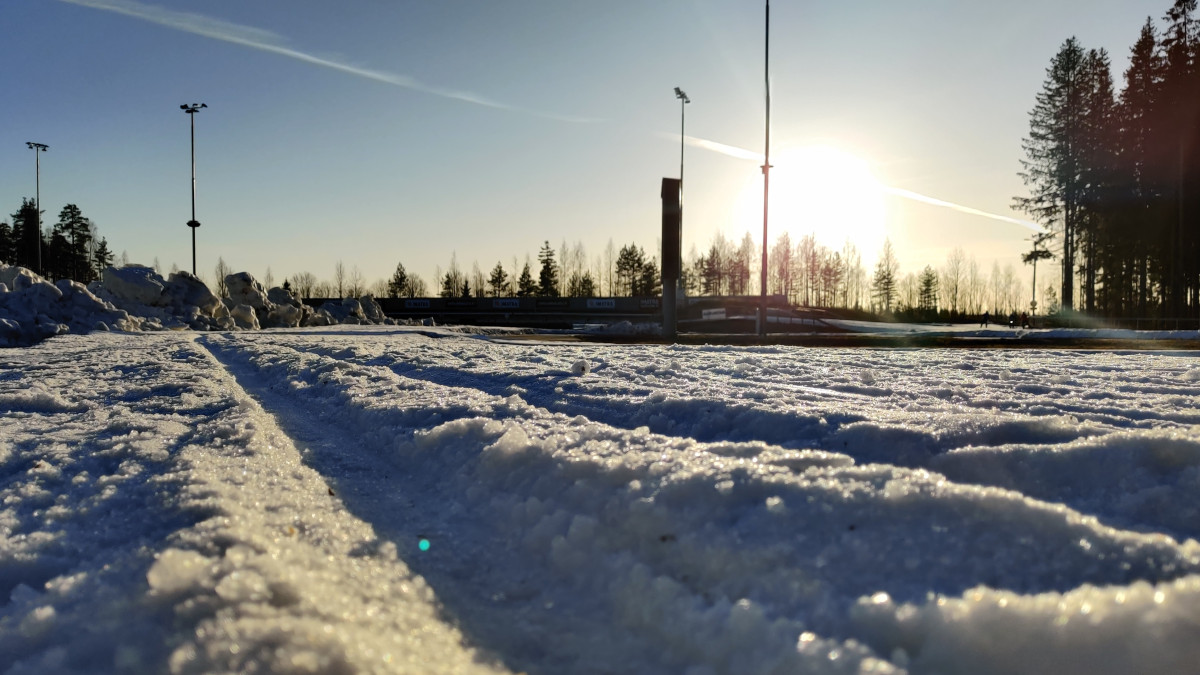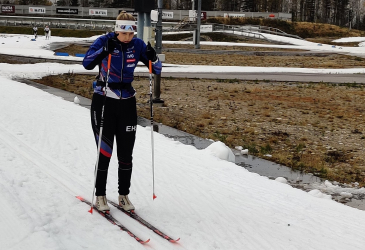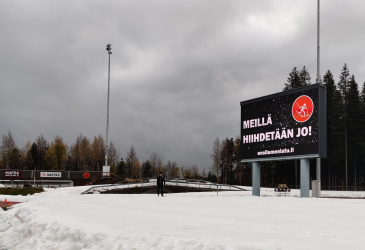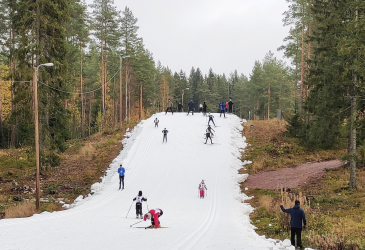
Eight questions about Imatra's first snow slope: why is the slope already made in October, how much does the slope cost and who decides all this?
1. What is the situation of the first snow slope now?
The track was patched on Monday morning and the situation is good at the moment. There are 1,3 kilometers of skiable, well-maintained slopes left.
Now the focus is on keeping the existing track in skiable condition for as long as possible. If the night frosts continue, the track will remain in good condition.
2. The trail is traditionally opened in October. Why is the track built so early in the fall?
Initially, the opening date has been set for October based on long-term weather data: it has been examined when night frosts generally start. It is also wanted to open the track before the start of the FIS competition season, when skiers can train at Imatra.
The ideal would be for the track to open for the fall holiday week in Southern Finland, i.e. a couple of weeks earlier than now. However, it is not possible in these conditions.
3. When will the track's opening date be decided and who will decide it? Why is the date decided in advance - wouldn't it make more sense to decide the opening date in the fall based on weather forecasts?
The opening date of the track will be decided in May-June. The date is decided by the working group, which includes representatives from the city, Imatra Base Camp, Mitra and Kipa.
The decision on the opening date must be made well in advance, because the opening time is very important information in the marketing of the track. The track is sold to domestic and foreign ski teams as well as private enthusiasts. For them, the exact opening time must be known well in advance.
Imatra has traditionally organized an international FIS competition in the fall. If the exact opening time of the track is not known in time, the competition cannot be applied to be held at Imatra.
4. How many users have there been on the track in autumn 2020?
A total of 767 passes have been sold to Ladu: 313 season passes, 26 monthly passes, 16 weekly passes, 196 weekend passes and 216 day passes. 99 company passes have been sold.
The chapters include both camp groups and teams as well as individual enthusiasts. The quantities are from Monday 9.11.
There have been 18 camp groups on the first snow slope so far, and more reservations have been made until December. In addition, groups have come through Imatra Kylpylä.
5. How much does a first snow slope cost?
A budget of 130 euros has been reserved for the track. On top of that are the maintenance costs, which are part of the normal maintenance costs of outdoor sports facilities.
Ticket revenue covers about half of the track's costs. The effects of the track on the economy of the Imatra region however, take the lane keeping to the plus side.
6. The track was built this year by a subcontractor. Why didn't the city make the track itself?
The construction of the track was tendered and the cheapest bid won. The construction was handled by a contractor from the nearby area.
Imatra's real estate and community service Kipa takes care of the track's maintenance.
7. Ensilumenlatu's snow has been made for this year in two places: Ukonniemi and Ruokolahti FreeSki. Why? How much does it cost to transport snow from Ruokolahti?
Last winter there was little natural snow. So a lot of cannon snow was needed, and last year it was done in two places because the capacity of Ukonniemi alone would not have been enough to make a sufficient amount of snow.
Transporting snow from Ruokolahti to Ukonniemi costs a few thousand euros. The amount is included in the track's budget.
8. Has something gone wrong with the maintenance of the track this year? What could be done differently?
The melting of the track is due to exceptionally warm weather, which continued for several weeks immediately after the opening of the track. In terms of construction and maintenance, nothing could have been done differently.
For some reason, the rink of the ice rink melted faster than the other rink, and therefore it was decided to close the rink completely. In this way, the resources could be concentrated on sections that are better preserved and the snow that was on the run could be used to repair other parts of the track.
After this winter, there are two things that need to be considered for next year: what is the sufficient amount of snow and what is the appropriate time to open the track.
Two very warm autumns are now behind us. You also have to be prepared for the fact that this kind of weather is the new normal. Could it be that if the people of Imatra want to offer a ski slope in the future, they must prepare to maintain the slope throughout the winter? We will think about these after this winter's ski season at the latest.
The questions were answered by the sports venue master responsible for maintaining the track Jani Niittynen (Kipa), the superintendent responsible for building the track Heikki Varis (Mitra), responsible for marketing the track Jaakko Jäppinen (Imatra Base Camp), head of welfare services Arja Kujala (City of Imatra) and special expert in welfare and education services Harri Valtasola (The city of Imatra).
For more information:
Jani Niittynen, Jani. Niittynen imatrankipa.fi (jani[dot]niittynen[at]imatrankipa[dot]fi), 040 677 9137
imatrankipa.fi (jani[dot]niittynen[at]imatrankipa[dot]fi), 040 677 9137
Heikki Varis, weak. crow mitra.fi (heikki[dot]varis[at]mitra[dot]fi), TWO TWO WHEN TWO
mitra.fi (heikki[dot]varis[at]mitra[dot]fi), TWO TWO WHEN TWO
Jaakko Jäppinen, jaakko.jappinen imatra.fi (jaakko[dot]jappinen[at]imatra[dot]fi), TWO TWO WHEN TWO
imatra.fi (jaakko[dot]jappinen[at]imatra[dot]fi), TWO TWO WHEN TWO
Arja Kujala, arja.kujala imatra.fi (arja[dot]kujala[at]imatra[dot]fi), 020 617 2227
imatra.fi (arja[dot]kujala[at]imatra[dot]fi), 020 617 2227


